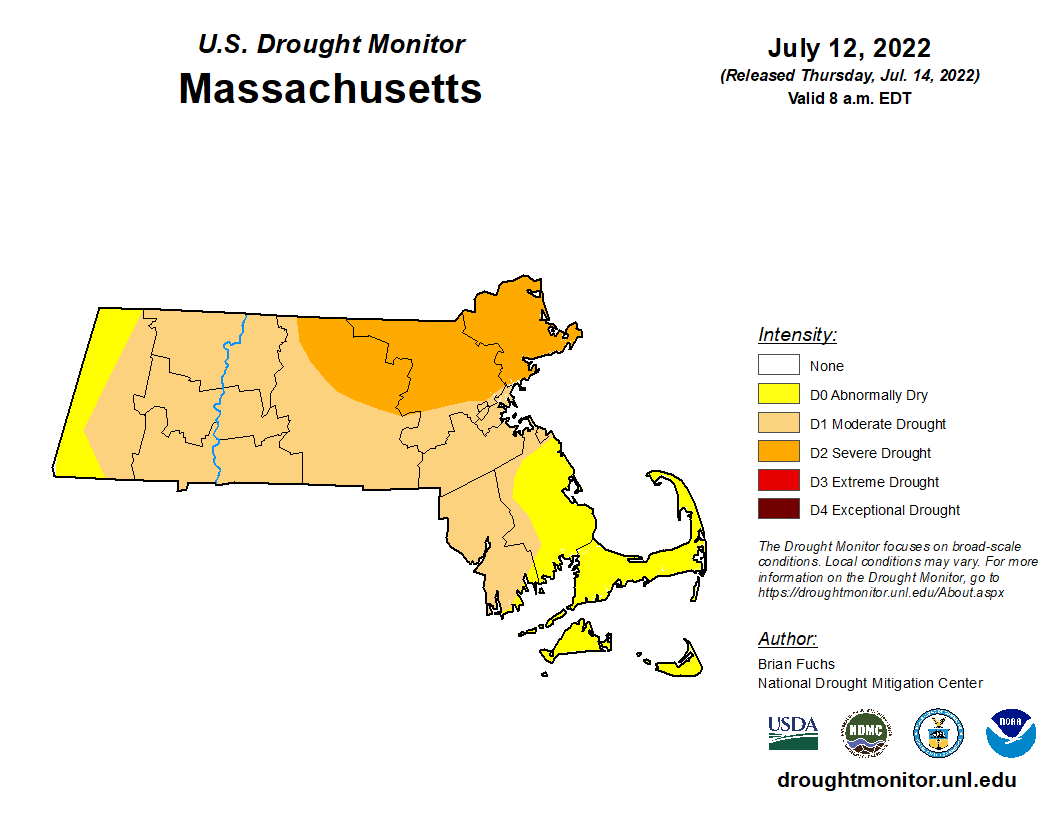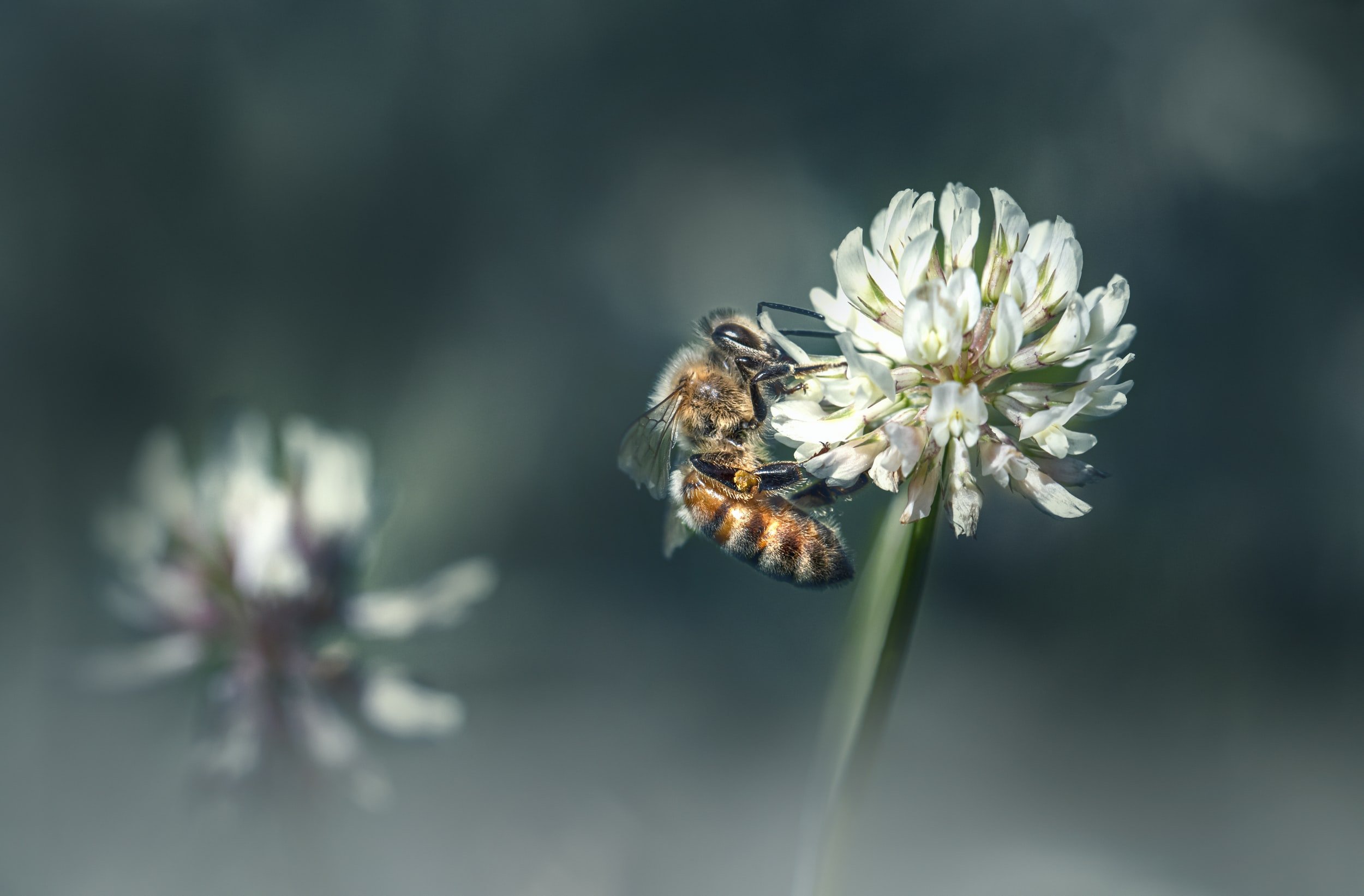Achieving a drought-tolerant lawn
Summer is here, and so is the heat! So much in fact that Essex County, along with the majority of New England, is in a significant drought and the forecast continues to be relentlessly dry and sunny. Most lawns are looking parched, and no one likes to sit down for a picnic or play games on burnt scratchy grass. But before you pick up your hose, read on!
Your first instinct may be to saturate the yard in water, but this does more harm than good in the long run: traditional lawns flood easily thanks to the shallow root systems of conventional grasses, carrying away precious nutrients, so more frequent low-volume watering works better. But we all know how wasteful that is, and in many municipalities watering your lawn in our current conditions is forbidden - and with good reason, considering that Beverly and many other towns draw their water from the endangered Ipswich River and lawns are non-essential.
All-grass lawns are bad for the environment
Green isn’t always “green”
Grass lawn care releases greenhouse gases into our atmosphere due to the energy needed for mowing. And unlike some groundcover alternatives, conventional lawn grass varieties aren’t very good at trapping and burying carbon since they have shallow root systems and a short life cycle.
In order to keep a pure grass lawn looking pristine, it must be watered, mown and sometimes even fertilized. Unfortunately, constant watering and rainwater runoff can carry pesticides and chemicals into our waterways, poisoning inhabitants of our local ecosystems and even contaminating our food.
The good news: there are alternatives that are attractive, convenient, and sustainable!
Clover lawn: looks good, costs less, supports more life
Although clover lawns may not look as “clean” as conventional grass lawns, they require much less maintenance. This means they are also very self-sustainable and inexpensive. Clover lawns are drought-resistant, feed themselves by converting airborne nitrogen into natural fertilizer, and sprout quickly after being planted. Many gardeners even find that having a clover lawn to munch on can keep bunnies from wreaking havoc in the vegetable patch, and clover is better at standing up to high traffic and pet usage.
On top of that, clover lawns also attract wildlife, insects, and pollinators such as bees! Mini-clover varieties are widely available that won’t grow past 4-5 inches, meaning you may never have to mow again. To get started, you don’t have to do any prep work at all: simply scatter clover seeds over your lawn (in this drought, maybe give it one good soak beforehand) and wait for them to sprout. Learn more about how to plant a clover lawn here.
If you can’t bear to part with your grass just yet, introducing clover and a range of other symbiotic, beneficial plants to your existing lawn is a great way to start.
Wildflower meadows: a gift to our ecosystem
Healthy ecosystems increase climate resilience
If you have an area of lawn that doesn’t see much human use, why not convert it to something other species would appreciate? Supporting native species (both plant and animal) leads to a positive chain reaction that contributes meaningfully to the fight against climate change.
Planting native wildflowers is hugely beneficial to vulnerable populations of pollinators and once established, wildflower plantings require very little to no maintenance. They have the added benefit of providing blooms from early summer through fall, turning what was once an environmental dead zone into a gorgeous display of color and thriving ecology. There are varieties to suit any range of light exposure and soil quality. The birds (and the bunnies, and the bees, and more!) will thank you.
Sustainable Home & Lawn Resources
The Monarch Gardener: Beverly-based, backyard grower Kate Banks Hone’s website and plant list are great resources for learning about what native plants work well in this area. Plus, she often has mini-clover available for sale!
Lawn by Lawn Pledge (Ipswich River Watershed Association): A drive to reduce water usage in order to preserve the endangered Ipswich River, which supplies Beverly and many other communities with our potable water.
Green Beverly Coaching Program: Take advantage of our completely FREE service to get guidance and support taking the next step of your journey towards a more sustainable home and yard.
Expert Tips to Help You Achieve a Zero Waste Home: This is a great roundup Redfin did of a variety of ways to approach sustainable living, provided by experts around the country (including us!). A drought tolerant lawn is an important step towards zero waste living!






